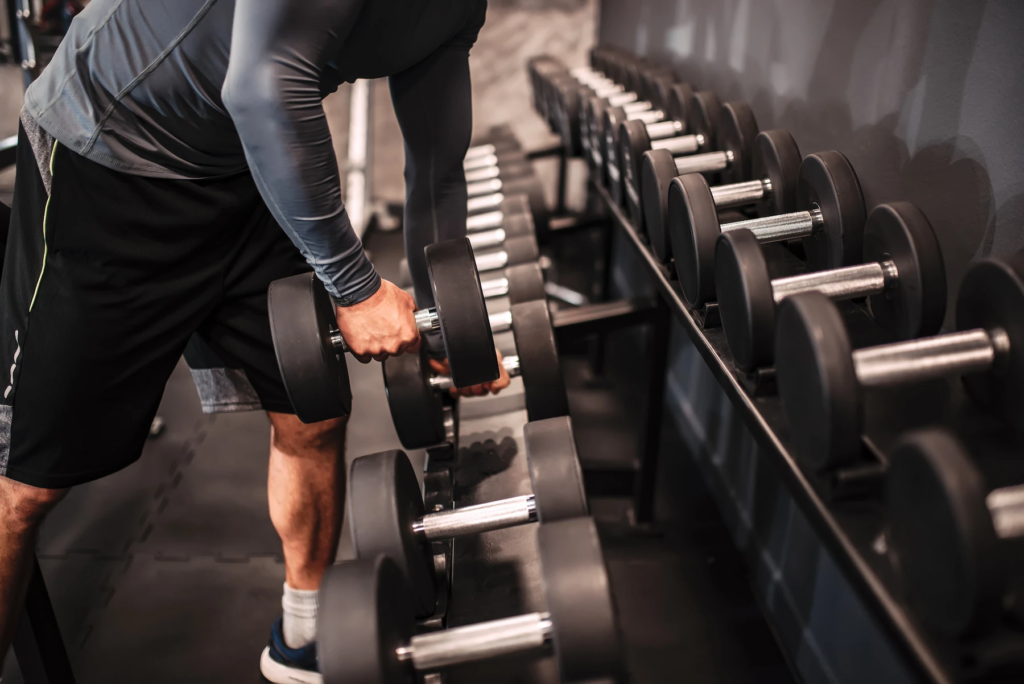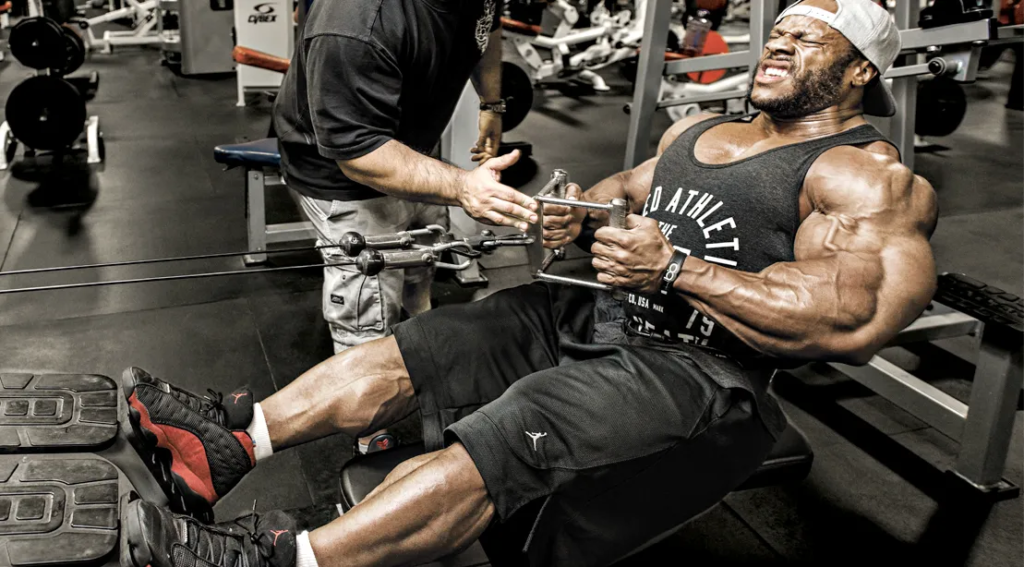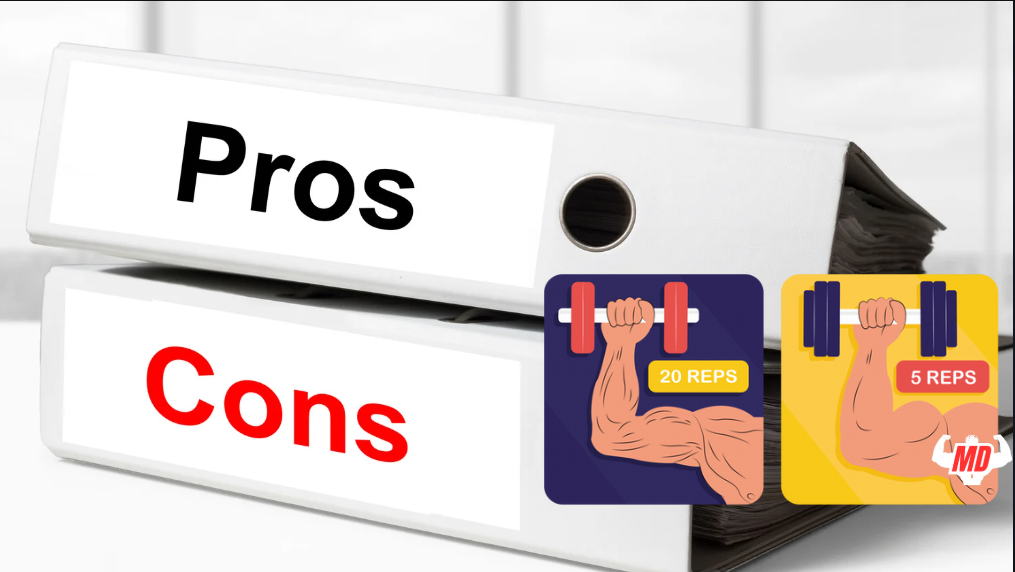Fitness involves strength training, but how training is structured influences muscle growth and performance. A number of repetitions in a set influences the physiological adaptations that occur, balancing hypertrophy, endurance, and strength.
High volume and low rep training are two common approaches with benefits and drawbacks. Learning about these methods enables athletes, bodybuilders, and all fitness enthusiasts to customize their programs.

Understanding High-Volume Training
High volume means doing more reps per set with moderate weight. This approach increases total training volume, which drives muscle hypertrophy.
High-volume training results from increased time under tension, which causes muscle fiber breakdown and growth. This method also improves muscular endurance, which is a favorite of bodybuilders and general fitness types.
High-volume hypertrophy-focused programs build muscle size. This training also improves muscular endurance and work capacity and is suitable for athletes who require sustained performance.

Understanding Low-Rep Training
Low-rep training stresses heavier weights with fewer reps per set – typically one to six reps. In this way, intensity is prioritized, thus promoting greater neuromuscular adaptations and maximal strength improvements.
Heavier weights recruit additional motor units and fast-twitch muscle fibers to increase power output and overall force production. It helps powerlifters, Olympic weightlifters, and athletes in strength-based sports turn to low-rep training.
Low-rep training builds strength but does not induce the muscle fatigue and metabolic stress of high-volume training. It becomes less effective in promoting muscle hypertrophy, but is essential in developing raw strength and performance.
Pros and Cons of High-Volume Training
Benefits:
High-volume training induces muscle hypertrophy. Extended time under tension promotes muscle growth by increasing metabolic stress and muscle fiber recruitment.
This training style also builds muscular endurance to help athletes perform longer periods of effort. It also places less acute stress on joints than heavy lifting and thus lowers the risk of joint-related injuries.
Drawbacks:
The biggest downside to high-volume training is the increased fatigue it causes. Longer recovery times during extended training may cause overtraining if not managed properly.
When volume is increased too aggressively without proper progression, there is also a higher risk of overuse injuries. Moreover, high-volume training does not emphasize maximal strength development and is less effective for athletes focusing on power and force output.
Pros and Cons of Low-Rep Training

Benefits:
Low-rep training builds maximal strength. Heavier loads improve neuromuscular coordination and force generation.
It also leads to shorter workout durations because the lower repetition count reduces total training time while maintaining high intensity. It improves athletic performance when explosive power is needed, for example, in sprinting or weightlifting.
Drawbacks:
Injury risk is higher with low-rep training when you do an improper technique or the lifter tries to push beyond their limits. The great loads strain joints and connective tissues, and increase the risk of strains and sprains.
Another drawback is that low reps do not induce as much muscle hypertrophy as high-volume training does. In addition, longer rest periods between sets are needed for full recovery, which can make training sessions longer.
When to Use Each Training Style
Those focusing on muscle growth should choose high-volume training. The added metabolic stress and muscle fiber recruitment induce hypertrophy in comparison with low-rep training.
Low-rep training is best for building maximal strength and power. It is best for improving performance in activities involving brief bursts of high-intensity effort, such as powerlifting and Olympic lifting.
Both approaches may help athletes with functional fitness and sports performance. Mixing volume with intensity allows for balanced development, combining strength, endurance, and hypertrophy.
Injury prevention and long-term joint health require moderation. This switching between high volume and low rep phases prevents overuse injuries and allows for sustained gains in strength and muscle development.
Combining High-Volume and Low-Rep Training
Periodization can incorporate high-volume and low-rep training. By cycling through different training phases, athletes can gain strength while maintaining muscle hypertrophy.
Common approaches involve low-rep training for core lifts like squats, deadlifts, and bench presses, along with high-volume accessory exercises for muscle growth. This combination permits strength progression while maintaining hypertrophy.
Recovery strategies help balance intensity with volume. Proper sleep/nutrition and active recovery reduce fatigue and prevent overtraining, ensuring steady progress over time.

Frequently Asked Questions
What best rep range should I adapt for muscle growth?
Hypertrophy should have 6 to 12 repetitions per set, which balances intensity and volume.
Can low-rep still build muscle?
Yes, it is less effective than high-volume training for hypertrophy. Low-rep training builds strength and power mainly.
How do I add volume without overtraining?
Gradually increasing workload, proper recovery, and controlling intensity prevent overtraining while increasing training volume.








